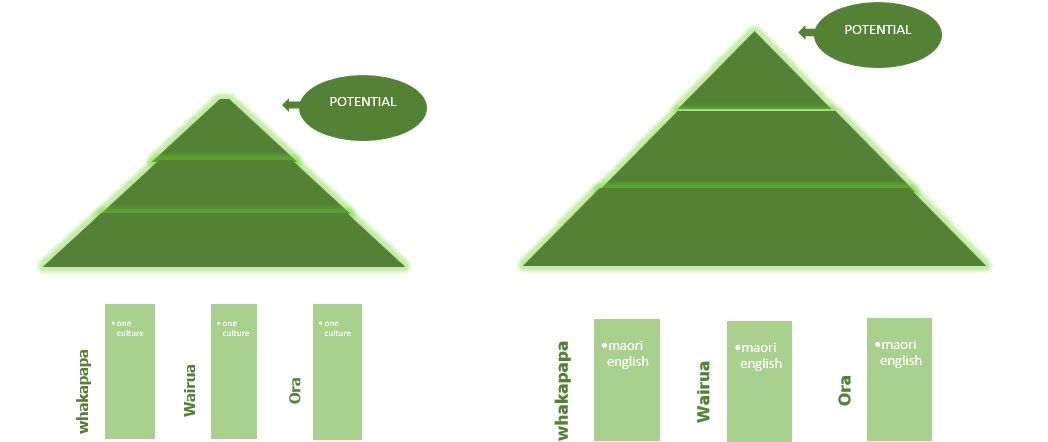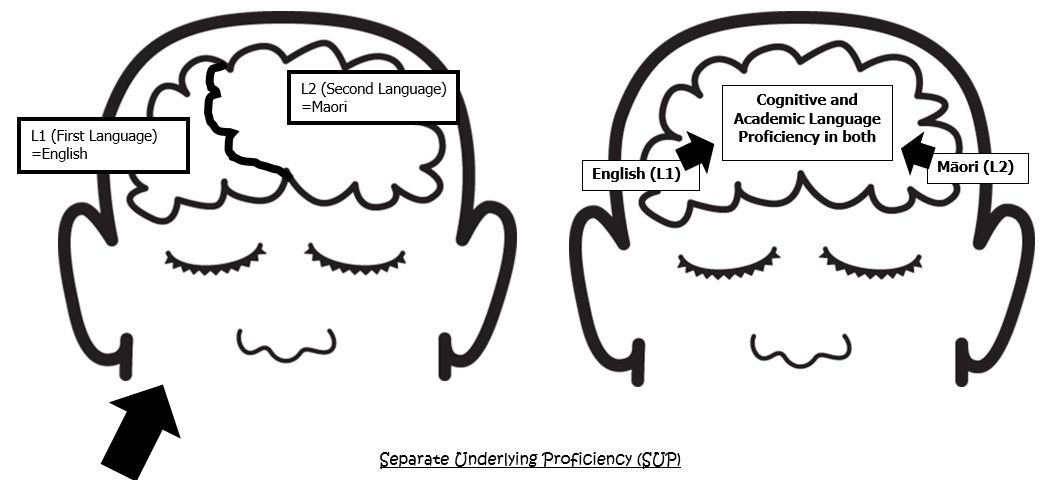Bilingual Education at Arowhenua Māori School
“I want my tamaiti to be bi-lingual.”
What would this look like?
Am I doing the right thing?
Ō tātou tāonga… te reo Māori.
- Te reo Māori is our treasure, like a treasure it needs to be cared for, protected and held in high esteem.
- Here in Aotearoa learning through a second language (L2) such as te reo Māori is the process…
…a Bilingual speaker is the end result, (they do not lose any ability with English as it is the dominant language and is all around them). - Te reo Māori is a heritage language –when a child recognises themselves as part of a certain heritage or culture, a sense of belonging and self-esteem is created.
- In our schooling system, our tāmariki thrive in an environment where they recognise themselves as a learner through this cultural normalisation.
- For a school to teach at 50% or more, te reo Māori needs to be the language of instruction. This means reading/writing/oral language and numeracy will be taught in te reo māori. The children still learn (and are assessed) the same skills just in another language.
TMoA
Te Marautanga O Aotearoa
-
81 – 100% Level 1(Most effective for Language Acquisition)
-
51 – 80% Level 2
NZC
New Zealand Curriculum
-
31 – 50% Level 3(Least effective for Language Acquisition)
-
0 – 30% Level 4
Will their English skills suffer?
How can I support them if I don’t speak Te Reo Māori?
What happens when they go to High School and beyond?
Ko te manu kai i te miro, nōna te ao. Ko te manu kai i te matauranga nōna te ao.
The bird that eats the miro berry, has the forest. The bird that eats of knowledge has the whole world.
What these two diagrams show is the level of possible potential (academically) someone could reach if their cultural “base” doubles. It is split into three categories; “whakapapa” –the family histories, genealogy, and values each culture can bring, “wairua” -the spiritual knowledge and values, “ora” –the health and physical knowledge and values. A child that is exposed to bi-lingual life experiences, whether through family or schooling or both, has the potential to double their academic and social ability, and broaden their outlook on life.
Remove boxes below and replace with pyramids.

Separate Underlying Proficiency (SUP)
Remove boxes below and replace with brains.

How long does it take?
When do we start seeing these benefits?
Is it good to move in and out?
4-6 Years
2-4 Years
0-2 Years
As you can see, research shows us it can take up to six years of good quality bilingual education before we can start to see the benefits. What is important is the need to stay with the programme, moving from one to another (Māori to English) actually can have a negative effect on their learning in both languages.
So you can see the bilingual journey for our tamariki takes time, commitment, support and a “leap of faith”.
“It takes one generation to lose a language and at least three generations to restore that language.”
For the sake of our reo taonga we need to start now so our language and culture are not lost for future generations.
One way we can keep the support and commitment going is to form a whanau support group.
Te Rununga o Ngai Tahu fund “Kotahi Mano Kāika, Kotahi Mano Wāwata” –a whanau based language revitalisation initiative that can provide support, funding and resources. We are happy to support this if we get enough interest.
We also have “closed” Face Book™ pages for each akomanga (classroom) where our intention is to not only celebrate awesomeness from our tamariki, but share supporting resources and up-to-date publications around language revitalisation and being bilingual. So if you haven’t joined up, ask your child’s kaiako to send you an invitation to join.
Tomo – Enrol
at our school but require further information.
Subscribe to Our Monthly Newsletter

Arowhenua Māori School is situated at 33 Huirapa Street on the Arowhenua Pa, 5 minutes south of Temuka and 15 minutes from Timaru. Free transport is available from Temuka, Pleasant Point and Timaru and other areas by arrangement.
We are a full primary school (year1-8) that provides opportunities for students of all ethnic groups to learn in a 21st century environment that encourages high achievement while fostering and valuing relationships that lead to a sense of belonging and a desire to achieve personal excellence.
Arowhenua Māori School
-
ADDRESS
-
TELEPHONE
-
EMAIL